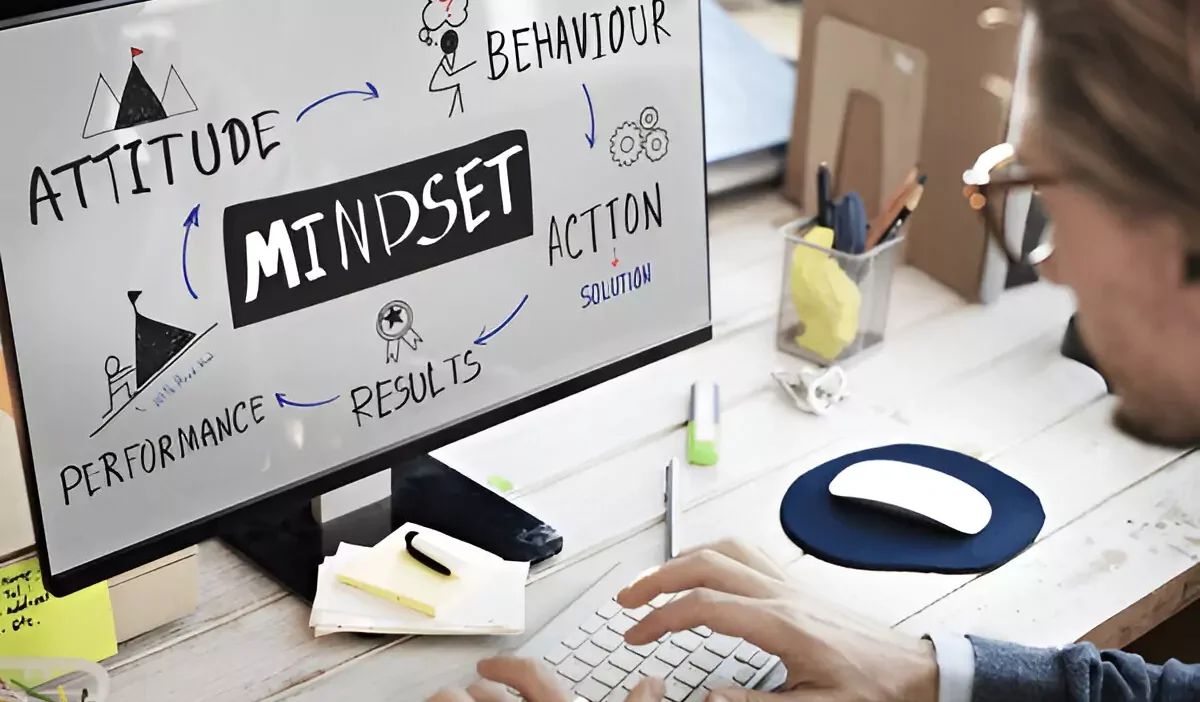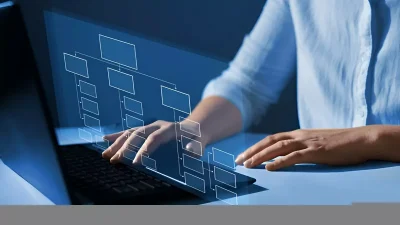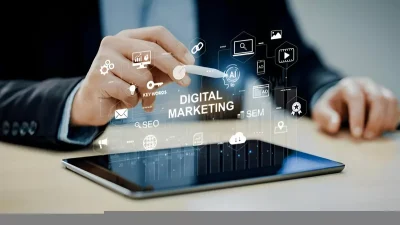In a world where technology has become omnipresent, the term ‘digital mindset’ is even for entrepreneurs and individuals when they adjust to their new reality. But what exactly does it stand for? Digital mindset goes deeper than simply knowing the rules of technology. It is a cognitive approach deeply ingrained and can manage your view of problems, how to utilize digital tools to solve them as well as being creative in generating new projects. This blog will explore what truly constitutes a digital mindset and why cultivating one is so important for professionals and organizations.
By the time you finish reading this blog post, not only will you grasp what a digital mindset means, but also pick up ideas about how to foster and bring it to flower in the digital era.
What is a Digital Mindset?
At its core, a digital mindset is the belief that present or future technology (if correctly accordant) can enhance business results, streamline procedures and induce innovation. Behind this lies an orientation towards change, a willingness to experiment, and data-driven decision-making as the key.
For it is pivotal to note that a digital mindset is much more than an accumulation of hardware-technical skills such as coding, AI algorithms, deeper understanding etc. Rather, it is about adaptability, about teamwork, and about how to solve complex problems through the tools available.
The Key Features of a Digital Mindset
Agility and Flexibility
In the digital context, people with a digital mindset accept a changing world rather than resist it. Digital tools are constantly changing, and staying agile is necessary to adapt and pivot.
Technology-led Problem-Solving
A person with a digital mindset sees how technology can solve all sorts of problems of daily living. Instead of using manual spreadsheets to manage project dates, for example, someone with a digital mindset might take advantage of a project management platform like Trello. PC-centric solutions can be employed to replace much paper waste and other previously non-digital waste too.
It Starts with Data-Driven Thinking
Data-driven decisions are made with the information at hand, rather than in the air. It means asking the right questions and interpreting analytics to help steer things strategically.
Collaborating Across Digital Channels
With the development of high-performance tools such as Slack, Zoom, and Microsoft Teams, savvy digital minds find ways to work seamlessly across these platforms—even in different parts and at odd hours.
Continuous Updating
The digital sphere is a dynamic place, and anyone with a digital mindset has the eagerness to keep abreast of the latest trends and technological advances. They prize lifelong learning in order to stay current for what lies ahead.
Misunderstandings of the Digital Mindset
One common misconception is that having a digital mindset means being highly technical. While technical skills can indeed help, rather than one’s actual level of expertise, a digital mindset is more about the way you think and approach technology. Nor does it mean simply to adopt technologies out of habit. A digital mindset is about fitting technological tools to one’s real needs and purposes.
Why Is a Digital Mindset Important?
People
Career Agility
A digital mindset means you can progress in step with your field. In every area—from marketing to health care to education—digital tools now figure in ways that no one has ever known. There simply isn’t any other choice but to keep up.
Enhanced Problem-Solving Ability
A sound digital mindset helps you find bottlenecks and apply technology to resolve them. For example, solving problems about transportation carry a non-negligible element of cost that may require tracking systems of the most avant-garde type.
Improved Productivity
Tools such as automation software, capable of making repetitive tasks efficient, help trained specialists deliver full value.
Organizations
Sustaining Innovations
Companies benefit from a workforce that understands digital technology. Digital-minded employees bring new ideas for using the latest tools and platforms effectively.
Remaining Competitive
Given the increasing dependence of industries on digital transformation, just going ahead of where we are now calls for agility, informed decisions on what comes next, and being tech-first.
Improved Customer Experience
Having a digital mindset opens the door for companies to know customer needs like never before. This might be done through the help of CRM systems, and that leads in turn to bringing a smoother online experience, using technology to enhance thought.
For Example
Suppose a retail company does not use digital tools. When the old-fashioned cashiering system breaks down, customers are forced to line up for service at the bottleneck. Other issues include slow customer support and stock visibility only as far as one’s perishables happen nearby. Now compare this situation to businesses that incorporate solutions like self-service kiosks, chatbots for immediate assistance on any queries customers have in their carts at Checkout Counter 13, and know in real time what they should do right now (pointing towards Aisle 14). To attract customers like those retailers will have happy buyers so long as they can maintain their margins on prices. Some businesses even avoid losing customers due to a lack of product inventory, but rather see this as an opportunity to present a more comprehensive range and thus increase turnover. Obviously, a digital mindset helps both businesses and their customers.
How to Cultivate a Digital Mindset
Developing a digital mindset is interrupted work. Here’s how you and your organization can cultivate it.
1. Plant a Growth Mindset
Begin by cultivating a willingness to change. Encourage yourself and others to view technology advances as opportunities rather than threats. For organizations, provide training aimed at keeping employees on the cutting edge of technological breakthroughs.
2. Teach Yourself New Skills, Again and Again
The more time you put into learn new digital skills, the larger your field of operation turns out to be. There are a number of free or inexpensive resources around offering courses in digital marketing, data visualization, understanding computer software and others.
3. Promote Experimentation
Do not shun failure in the testing of new solutions. Try tools like Notion for productive work or Hootsuite to schedule your posts on social media. If something doesn’t work, discover why it failed and how to make it better next time around.
4. Build on Cooperation
Enhance how you or your team works together across a variety of different tools and platforms. For instance, use files stored in Google Drive that everyone can open, edit, and share changes made to them in real time. If your organization has a project in progress requiring many people to work on the job simultaneously, point them towards one location online accessible by all of them via—for example, Jira.
Leading the Digital Mindset Shift
5. Leading This Change of Digital Mindset Starts with You
Leaders and managers have a significant part to play in molding the digital mindset of their teams. Here’s how they can set a good example by doing things themselves.
6. Outlining the Vision
Make it clear what effect embracing a digital mindset has in line with corporate goals.
7. Provide the Resources
Make sure employees have both the know-how and the wherewithal they need to thrive in this new digital era.
8. Cheers
Remember the line: in the glue, you celebrate with flowers. Whether it’s through new efficiencies or closer cooperation, success stories mean better morale.
Making a Future Mindset
How did people come to have a digital mindset? More importantly, what can we do in order to foster their growth? In today’s world, a digital mindset is no longer regarded as a vaguely defined elective characteristic; it is something that impinges on everything.
Where Can You Start?
Begin by finding small opportunities to use technology in your work. Invest in tools, learn from others and don’t be afraid to go beyond your comfort zone. The ultimate goal is to have a digital mindset, which is about looking at what comes as possible improvisations on reality.



